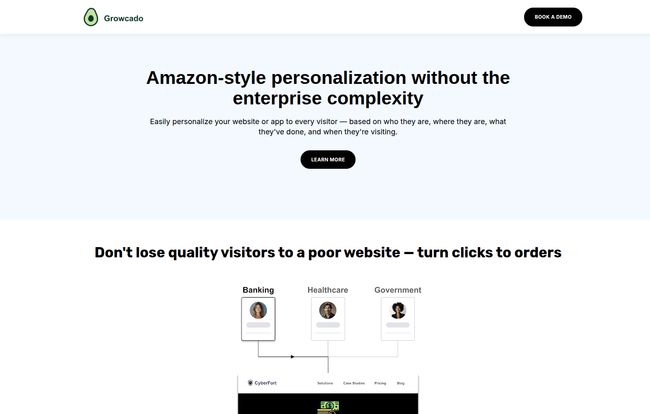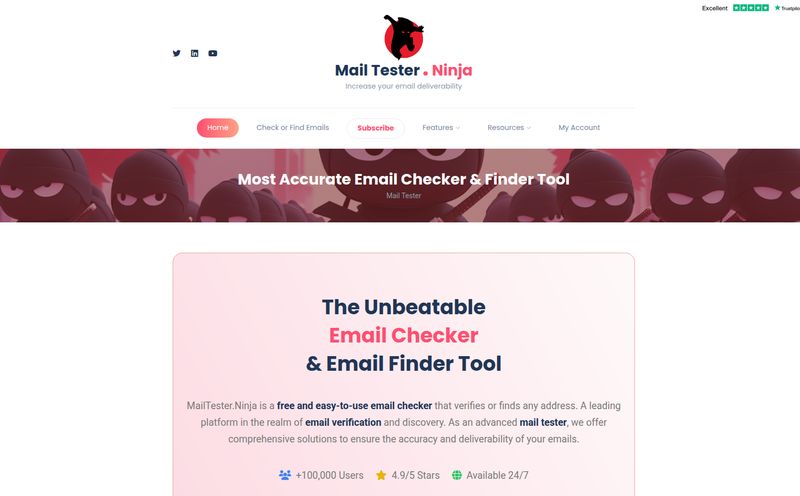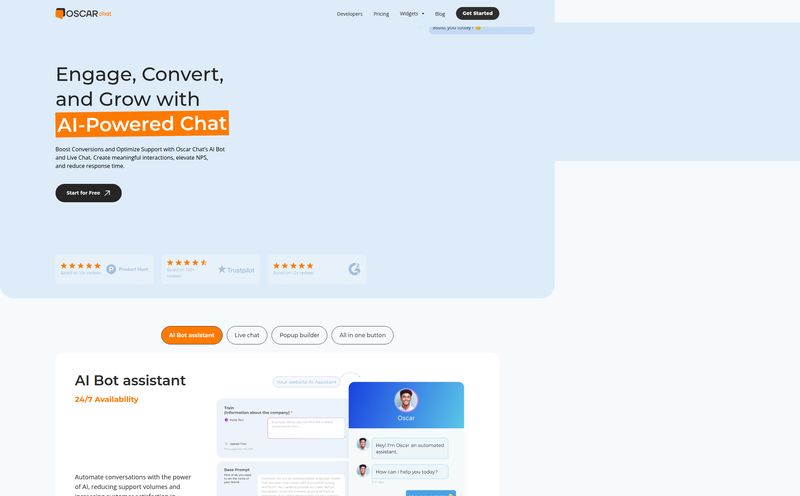Let’s have a real chat. For years, we’ve all been chasing the white whale of marketing: true, 1-to-1 personalization. We see Amazon do it, Netflix do it, and we think, “I want that.” We’re told it’s the key to boosting conversions, increasing customer lifetime value, and basically solving all of life's problems. And it is… sort of. But let's be honest, for most of us, the reality has been a technical nightmare. A tangled mess of integrations that are more fragile than my grandma's fine china, data silos that don’t talk to each other, and a constant reliance on the dev team for every tiny change.
It’s the great personalization paradox. We know we need it, but the cost and complexity can be staggering. So when a tool like Growcado pops onto my radar promising “Amazon-style personalization without the complex integrations,” my professional skepticism immediately kicks in. But so does my curiosity. Could this be the one? The tool that finally democratizes hyper-personalization for the rest of us? I had to take a look.
So, What Exactly is Growcado?
At its core, Growcado is an AI-powered marketing automation platform. But that’s a bit like calling a swiss army knife just a knife. It’s also a built-in headless CMS and a Customer Data Platform (CDP). The whole idea is to give marketing teams the power to create deeply personalized experiences for every single person who visits their website or app. And I mean every person.
We're talking about changing content based on their identity, their physical location, their past behavior on your site, and even the time of day they’re visiting. Imagine a returning customer seeing a “Welcome back!” message with products related to their last purchase, while a brand-new visitor from a specific ad campaign sees a landing page that perfectly matches the ad copy that brought them there. That’s the dream, right? Turning those anonymous clicks into actual, loyal customers.
The Core Features That Actually Matter
A features list is just a list. What I care about is how those features solve the real-world, hair-pulling problems we marketers face every day. And Growcado has a few tricks up its sleeve that genuinely caught my attention.
The Warehouse-First Approach: Your Data Stays Your Data
This one is huge. For me, this is probably the most important aspect. Many marketing tools want you to pump your precious customer data into their black box. Your data goes in, gets processed, and you’re effectively locked into their system. Getting it out is a pain, and you have to trust their security completely. Growcado flips the script with a warehouse-first approach. It connects directly to your existing data warehouse—think Snowflake, Google BigQuery, Redshift, etc. Your data never leaves your own secure environment. This isn’t just great for privacy and compliance (hello, GDPR), it gives you complete control and avoids vendor lock-in. It treats your data warehouse as the single source of truth, which is how it should be.
A Truly Unified Customer View
Because it plugs into your central data warehouse, Growcado can help create that elusive unified customer profile. No more wondering if Jane Smith from your email list is the same J. Smith who just bought something from your Shopify store. It pulls all those touchpoints together. It’s the difference between having a disjointed, chaotic conversation with your customers and having a single, coherent one. This unified view is what powers intelligent segmentation, allowing you to group customers in incredibly specific ways that just aren't possible when your data is scattered across ten different tools.

Visit Growcado
No-Code Customization Meets an API-First Mindset
Here’s the win-win for the whole team. For marketers like me, the promise of a no-code visual editor is music to my ears. It means I can design and launch a personalized campaign for, say, visitors from California who have previously viewed hiking boots, without having to file a ticket and wait two weeks for the dev team. It puts the power back in the hands of the people running the campaigns.
But—and this is a big but—it doesn’t handcuff your developers. Growcado is also API-first, meaning for the devs who want to build truly custom, deep, and complex integrations, all the endpoints are there. They can pull personalized content into any application or build whatever they need. It’s a tool that respects both the marketer’s need for speed and the developer’s need for flexibility. I love that.
Let's Talk Headless CMS
If you're not familiar with the term 'headless', don't worry. Think of it like this: a traditional CMS (like WordPress) bundles the backend (where you write and store content) and the frontend (the website your visitors see) together. A headless CMS decouples them. The content is just pure data, stored in what you can think of as a “content brain.” This “brain” can then deliver that content via an API to any frontend you want—a website, a mobile app, a smart watch, an in-store kiosk, you name it. It's an incredibly flexible and future-proof way to manage your content, and having it built right into your personalization engine is just… smart.
Who is Growcado Really For?
After looking at the feature set and the positioning, this isn't a tool for the blogger just starting out or the small Etsy shop. Let’s be real. Growcado is aimed squarely at mid-market and enterprise-level businesses. Specifically, companies that are already sitting on a decent amount of customer data in a warehouse and are feeling the pain of their current, impersonal marketing stack. If your team has conversations that start with, “I wish we could just show X to customers who did Y,” then you’re the target audience. It’s for marketers, developers, and agencies who are ready to graduate from basic A/B testing into the big leagues of personalization.
The Good, The Bad, and The Realistic
No tool is perfect. Here's my honest breakdown.
On the plus side, the upsides are pretty compelling. The ability to personalize without complex integrations is the headline feature for a reason. The warehouse-first approach is a massive win for data privacy and control. And their case study boasting a 21% conversion boost from a single personalized campaign shows this isn't just theory; it can deliver real ROI. The no-code interface is a genuine empowerment for marketing teams who are tired of being bottlenecked by technical resources.
Now, for the reality check. This isn't a magical “install and go” solution. The implementation time will depend on your specific use case and the state of your data. And that leads to the second point: Growcado relies on your existing customer data. If your data hygiene is poor—if your data warehouse is a mess—then you're just personalizing with garbage. Garbage in, garbage out. You need to have your data house in order to really make this sing. Finally, it does require that initial setup to connect to your data warehouse, which might require some technical assistance to get started.
What About the Price Tag?
Ah, the question on everyone's mind. I went looking for a pricing page, and... I hit a 404. Page not found. And honestly? That's not a suprise. This is classic B2B SaaS for an enterprise-grade product. There are no neat little packages for $49/month.
Pricing is available by booking a demo. This means it’s going to be a custom quote based on your needs—likely factors like data volume, number of users, website traffic, and the level of support you require. This model makes sense for a platform this powerful, but it also clearly signals that it's a significant investment intended for businesses with a serious commitment to improving their customer experience.
My Final Take: Is Growcado Worth the Demo?
So, here’s the bottom line. If you're an established business with a data warehouse, and you're frustrated by the limitations of your current marketing tools, then yes, absolutely. Booking a demo seems like a no-brainer. The potential to increase conversion rates and customer LTV by finally leveraging the data you already own is immense. The architecture seems modern, secure, and built to solve the exact problems that have plagued personalization projects for the last decade.
However, if you're an early-stage startup without a centralized data strategy, or you're looking for a cheap and simple plug-and-play tool, this probably isn't the right fit for you right now. And that's okay. Growcado knows who it's for, and it serves that audience exceptionally well.
Frequently Asked Questions about Growcado
- Do I need to be a developer to use Growcado?
- Not for day-to-day campaign management. Growcado features a no-code visual builder that allows marketing teams to create and manage personalized experiences without writing code. However, the initial setup to connect to your data warehouse might require some technical help.
- What does "warehouse-first" mean for my data security?
- It's a major security benefit. It means Growcado connects to your existing data warehouse (like Snowflake or BigQuery) rather than you having to upload your data to their servers. Your sensitive customer data stays within your own secure, controlled environment, reducing risk and helping with compliance.
- Is Growcado a good fit for e-commerce businesses?
- Yes, it seems ideal for e-commerce. The platform is designed to “turn clicks to orders” by personalizing the shopping experience based on user behavior, purchase history, and more. Their case study highlighting a 21% conversion boost for an anniversary campaign shows its potential in this area.
- How does Growcado integrate with my existing tools like Salesforce or Mailchimp?
- Growcado is designed to connect with your favorite applications. It can pull data from sources like your CRM (Salesforce) and push personalized segments to execution tools (like Mailchimp or Facebook Ads), ensuring your personalization efforts are consistent across all your channels.
- What kind of results can I realistically expect?
- While results vary, the goal is to improve key metrics like conversion rates, average order value (AOV), and customer lifetime value (LTV). By showing the right content to the right person at the right time, you reduce friction and increase relevance, which typically leads to better business outcomes.
- How is Growcado different from a standard CDP or CMS?
- It combines the functionality of both and adds a layer of AI-powered personalization. While a standard CDP unifies customer data and a standard CMS manages content, Growcado does both and provides the engine and no-code tools to use that data and content to actively personalize your website/app in real-time.
A New Chapter in Personalization
For a long time, the tools for personalization have forced us into a corner: either accept a clunky, integrated mess or settle for superficial personalization that doesn’t really move the needle. Platforms like Growcado represent a shift. By building on a modern, warehouse-first foundation, they offer a path to achieve that Amazon-level personalization we’ve all been dreaming of, without the Amazon-level engineering team. It's an exciting development, and one I'll be watching very closely.



